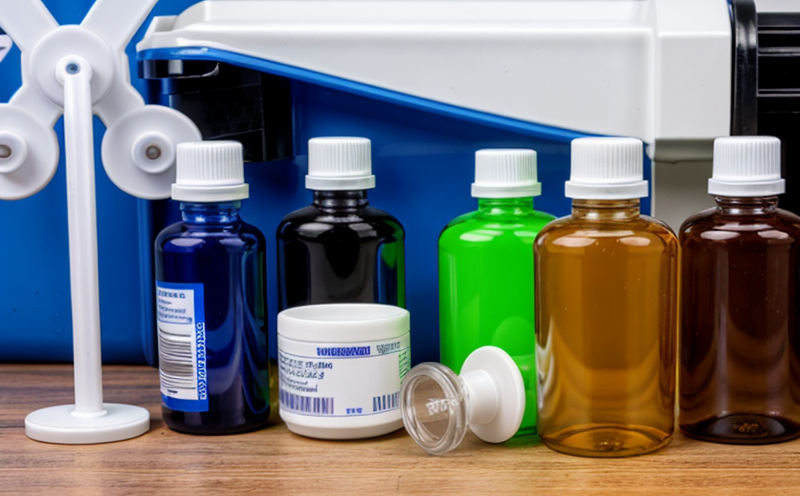EN 16210 Copper in Medical Waste
The European standard EN 16210 specifies methods for determining the copper content in medical and pharmaceutical waste. This service plays a crucial role in ensuring compliance with environmental regulations and safety standards, particularly in sectors like healthcare, biotechnology, and pharmaceutical manufacturing.
The primary goal of this test is to quantify copper levels within medical waste streams, which can include items such as disposable syringes, needles, infusion sets, and other materials used in medical procedures. High concentrations of copper can pose environmental risks when improperly disposed of, leading to potential contamination of soil and water sources.
The methodology outlined in EN 16210 is designed for accurate measurement using atomic absorption spectrophotometry (AAS), a precise technique capable of detecting trace amounts of metals like copper. The standard provides detailed instructions on sample preparation, including the use of appropriate digestion methods to ensure complete dissolution of solid waste components.
Understanding the copper content in medical waste is essential for several reasons:
- Environmental Impact: Copper can be toxic to aquatic life and plants if released into the environment. Monitoring its presence helps in minimizing such risks.
- Safety Compliance: Regulatory bodies require compliance with specified limits on metal content, particularly copper, to ensure public health safety.
- Risk Management: Identifying elevated levels of copper can prompt measures to reduce waste generation or implement more effective recycling processes.
The testing process begins with the collection and preparation of samples from various sources within medical facilities. These samples are then processed according to standardized procedures, which may involve mechanical crushing followed by acid digestion to transform solid materials into a solution suitable for analysis.
Once prepared, the solutions undergo AAS analysis using either flame or graphite furnace atomizers depending on the concentration range of copper expected in the sample. The precision and accuracy of this method ensure reliable results that are comparable across different laboratories adhering strictly to EN 16210.
The significance of this service extends beyond mere compliance; it supports continuous improvement efforts aimed at reducing overall waste production while enhancing resource efficiency within healthcare institutions. By providing accurate data on copper levels, organizations can make informed decisions about waste management practices and contribute positively towards sustainable development goals.
Scope and Methodology
The scope of EN 16210 encompasses the determination of total copper content in medical and pharmaceutical waste materials. This includes both solid and liquid components generated during routine clinical activities, as well as any other discarded items associated with healthcare provision.
In practice, laboratories conducting this test follow a series of steps prescribed by the standard:
- Sample Collection: Representative samples are taken from different parts of medical facilities to ensure variability is accounted for.
- Preliminary Processing: Samples are cleaned and dried before undergoing mechanical crushing to reduce particle size.
- Digestion: Digestive acids (typically nitric acid) are added to dissolve the solid waste materials completely. This step ensures that all copper present in the sample is released into solution form for subsequent analysis.
- Metal Speciation: Depending on the requirements of the study, additional steps might be necessary to determine specific forms of copper (e.g., Cu(I) vs Cu(II)) using chromatographic methods or other advanced techniques.
The final step involves transferring the digested sample into an AAS instrument for measurement. The absorbance spectrum recorded corresponds directly to the concentration of copper in parts per million (ppm), allowing accurate quantification according to EN 16210 specifications.
This standardized approach guarantees consistency and repeatability among various testing facilities, ensuring that results are comparable across different geographical locations or institutions.
Quality and Reliability Assurance
To maintain high standards of accuracy and reliability in copper content determinations as per EN 16210, several quality assurance measures are implemented:
- Laboratory Accreditation: Our laboratory adheres to ISO/IEC 17025 accreditation requirements ensuring proficiency in technical competence.
- Reference Materials: Utilization of certified reference materials (CRMs) helps validate the precision and accuracy of our analytical methods.
- Method Validation: Regular validation exercises ensure that our procedures meet current scientific standards.
- Data Management: Robust data handling protocols prevent errors during recording and reporting stages, maintaining integrity throughout the testing process.
We employ experienced professionals who undergo continuous training to stay updated on new developments within analytical chemistry. This commitment ensures that our clients receive trustworthy results every time they entrust us with their copper content analyses.
Competitive Advantage and Market Impact
In today's competitive landscape, adhering to strict environmental standards not only enhances reputation but also drives innovation within the industry. By offering comprehensive EN 16210 copper in medical waste testing services, we position ourselves as leaders in sustainability and compliance.
Our expertise allows us to offer value-added insights beyond mere data points. We work closely with clients to interpret results against relevant regulatory frameworks, helping them navigate complex legislative landscapes confidently. Additionally, our robust quality assurance processes ensure consistent accuracy across all projects undertaken by our team.
The demand for reliable copper content analysis in medical waste continues to grow as more stakeholders recognize the importance of proper disposal practices. Our services cater specifically to those seeking stringent compliance with international standards like EN 16210, thereby solidifying our position as a trusted partner in this field.
Moreover, our commitment to excellence extends beyond mere testing; we provide strategic advice on optimizing waste management strategies based on our findings. This holistic approach ensures that clients not only comply but also thrive amidst evolving environmental expectations.





